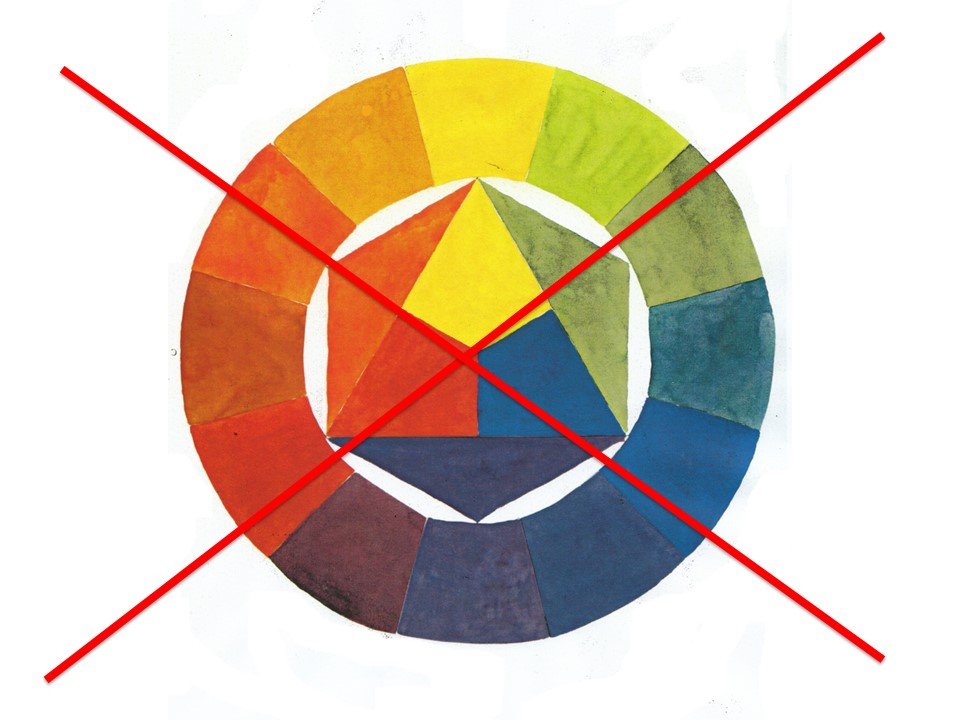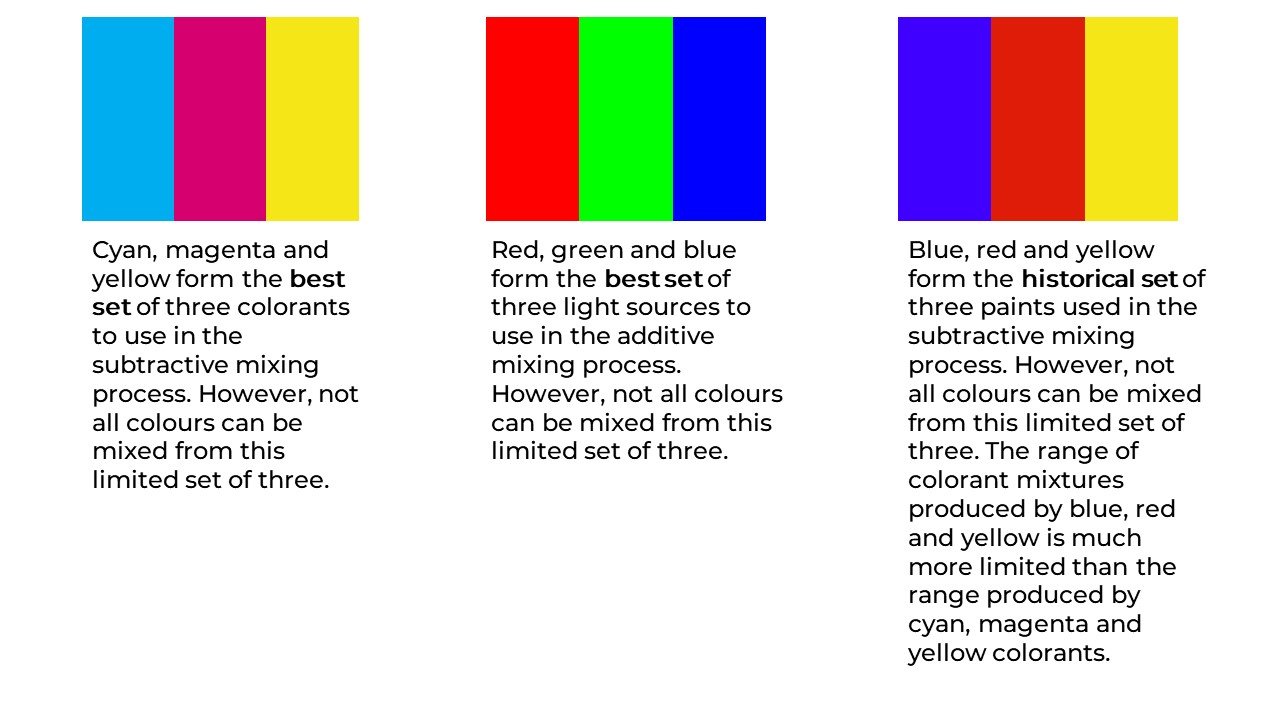Misconception: All colours can be mixed from a ‘primary’ set of three
Concept Corrected: Not all colours can be mixed from a limited set of three (by any means)
Image courtesy of Harald Arnkil.
When we are first introduced to ideas about colour, often we are taught about how to mix paints. We learn about the so-called ‘primary’ colours, and how they can be mixed to secondary colours, how to arrange them on a colour wheel, and how the opposites on the colour wheel are complements. All of these seemingly straightforward ideas are problematic, and present an overly-simplified view of colour. In many cases, these ideas becomes our point of reference for how colour behaves. Instead, what we are really learning in this specific instance is how coloured paints mix together and behave. (Colour itself is a perception.)
Colour wheels present an overly-simplified view of how coloured media behave. (Ditch them, and work with three-dimensional models of colour instead.)
Once common misconception that emerges from this simple picture of colour is that all colours can be mixed from a limited set of three. It is in fact physically impossible to mix all colours from a limited set of three - in any medium, or via any mixing process - even if you add in black and white, or use cyan, magenta and yellow. It is very important to recognize that we can mix paints (or other coloured media) but we can’t mix colours.
In some cases, it may be possible to mix all hues from a set of three, but not all colours. The physical act of mixing coloured media diminishes the vividness or chroma of the mixed colour.
There is a lot of confusion around the way coloured media mix, and the notion of so-called ‘primaries’.
There are different ways that coloured media can be mixed:
via the SUBTRACTIVE MIXING PROCESS, for example, when media like coloured paints mix on a palette
via the SIMPLE ADDITIVE MIXING PROCESS, for example, when individual sources of light from our computer screens enter our eyes
via the OPTICAL MIXING PROCESS, for example, when colours painted on a spinning disc mix as the disc quickly spins
Each type of mixing process is physically different, impacting the distribution of light that enters our eyes in a different way. When light enters our eyes, it activates our visual system, resulting in a colour perception. It is physically impossible to produce the full range of all the colours we can see via any mixing process, using a limited set of 3 (or even 4 or 5) colours.
The well known ‘primary’ sets for coloured media - cyan, magenta and yellow for colourants like inks or paints, and red, green and blue for sources of light - form the optimal set of three, and mix to the widest range of colours for the subtractive and additive mixing processes respectively. Red, yellow and blue are the historical set of primaries for painters.
FIND OUT MORE:
A thorough discussion on the history and usage of primary colours can be found at David Briggs’ site: http://www.huevaluechroma.com/062.php







